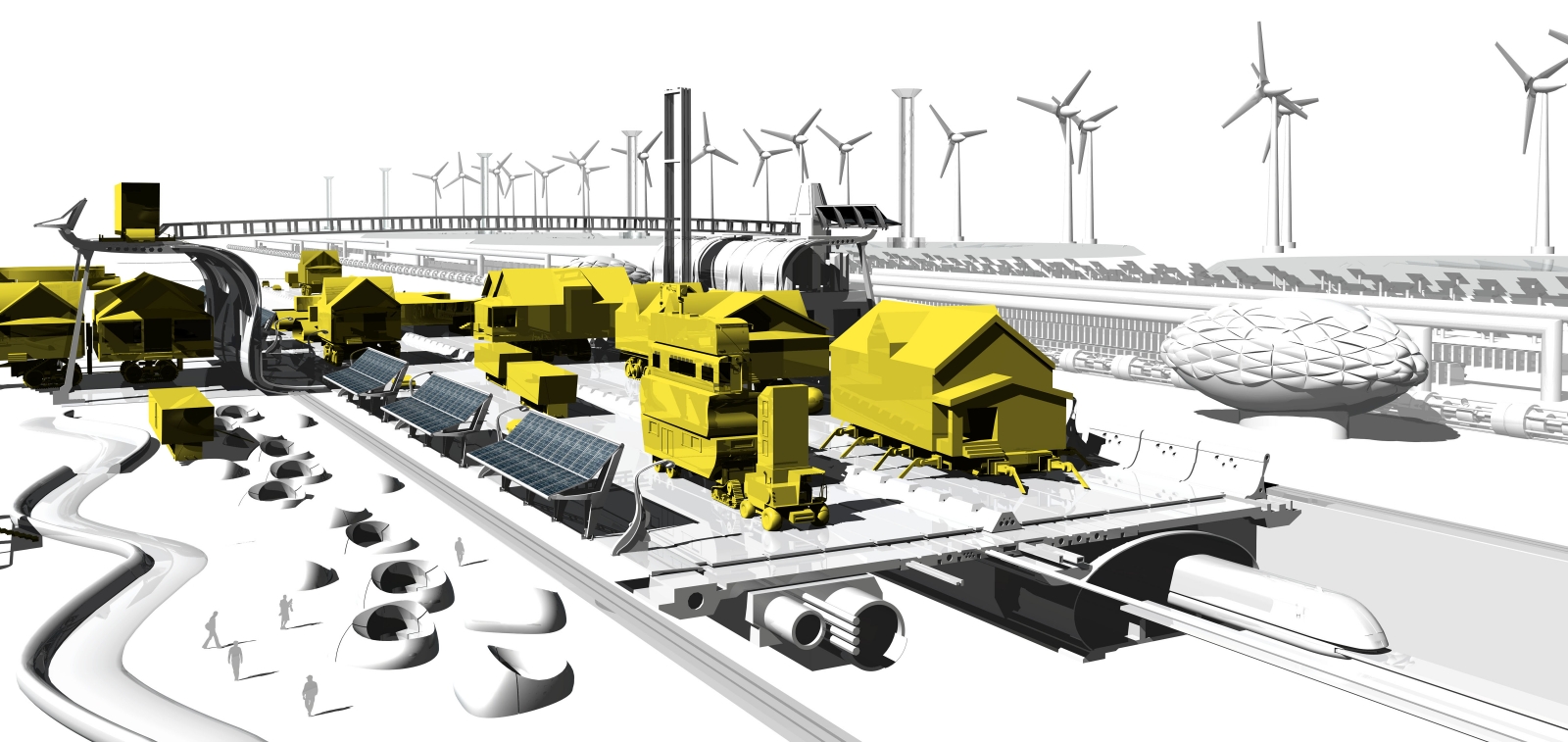
June 25, 2014
Terreform ONE Proposes “Walking City” of Housing for American Families
Terreform ONE proposes a radical answer to the question in multigenerational housing for America.
The following proposal, by the architects and futurists at Terreform ONE, was submitted for our May cover feature, in which we asked designers to envision new models of multigenerational housing.
“Multigen” will enable generations to live together, but still preserve options to move away for any length of time. Not only will extended families be able to live together “under one roof,” they will also have the option of combining their living units with those of, say, their grandparents, parents, or children. These can, in turn, be integrated into greater settlement patterns, including cities, suburbs, and rural areas.
Multigen housing is comprised of fixed and mobile elements, as well as a variety of architectural types, to accommodate the changing desires and lifestyles of multiple generations living together. In doing so, they are designed for both intergenerational continuity and moments of flux: going off to school, changes in marital status, retirement travel—all the forms of making and moving away from the family nest.

A Multigen house temporarily docked in the city
The combination of these semi-permanent, semi-mobile elements opens up numerous combinations of autonomous and communal living arrangements. The mobile units can be detached or integrated into the larger structures. They can range from readily-available RVs and trailers to customized modular homes, complete with their own power trains and self-contained support systems.
The environmental footprint of these informal “neighborhoods” can be incrementally reduced. The modular design enables more efficient technologies to “plug in” to the building and private vehicle stock. New sources of power, more efficient uses of water, and innovative power train designs can be integrated into the units, which can be designed for adaptation to climate change—for both emergencies and long-term transformations.

Different combinations of houses with attachable (and detachable) housing components
The increased options they afford will allow for a semi-nomadic social life, that responds to both intergenerational affinities and conflicts. The mobile elements can also be designed to function for a variety of time or distance requirements—based on efficiency and need—from going on an errand to relocating to another part of the country, from a brief holiday to a permanent separation.

A Multigen community anchored to preexisting infrastructural networks.
Recent Viewpoints
Viewpoints
Sustainability News Updates for Q2 2025





